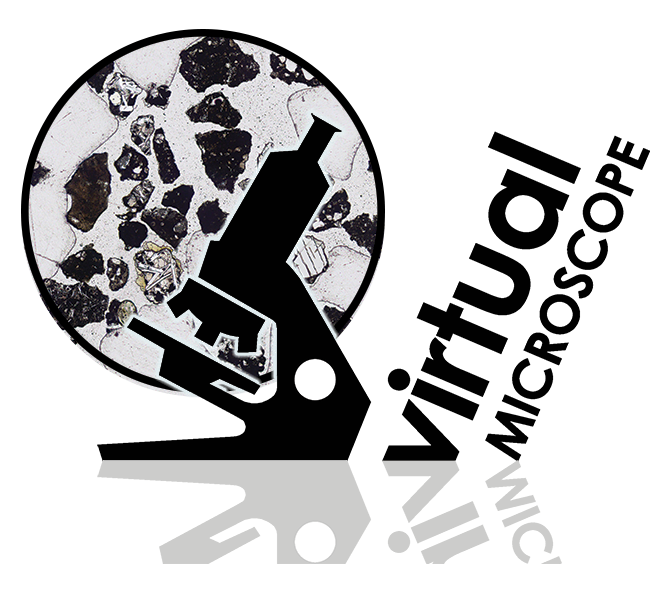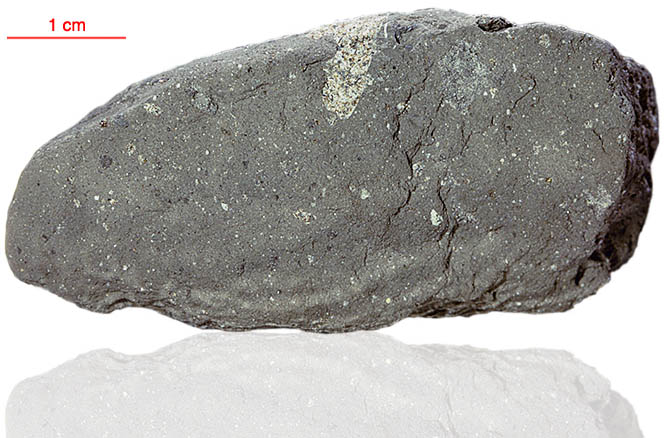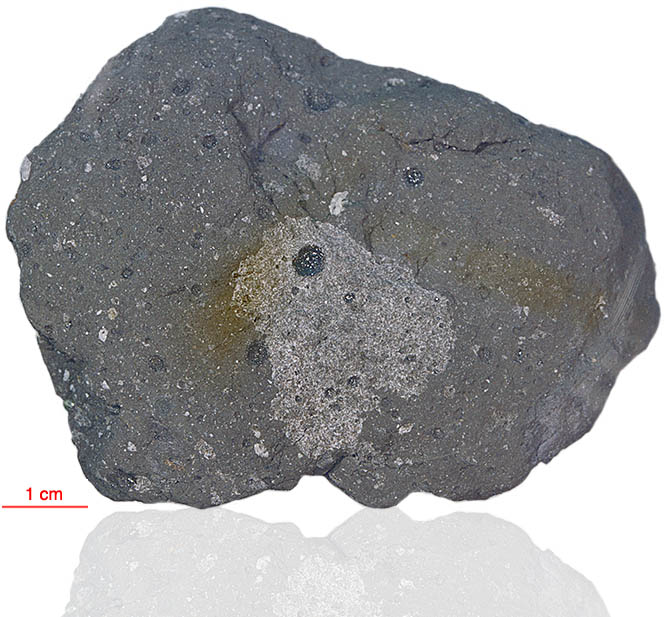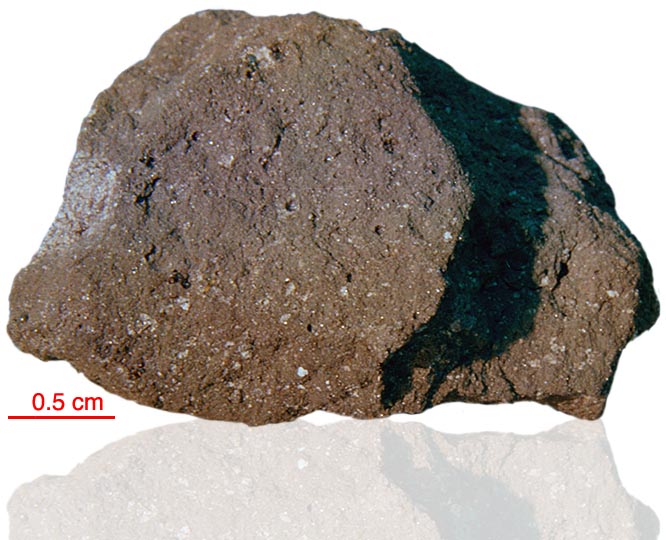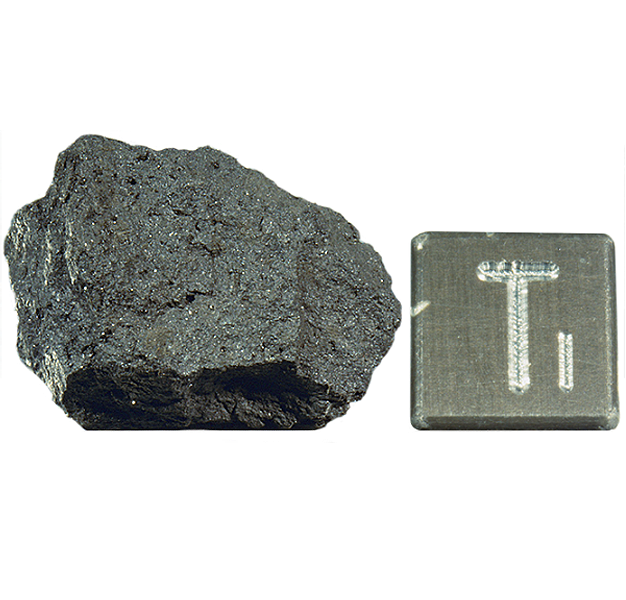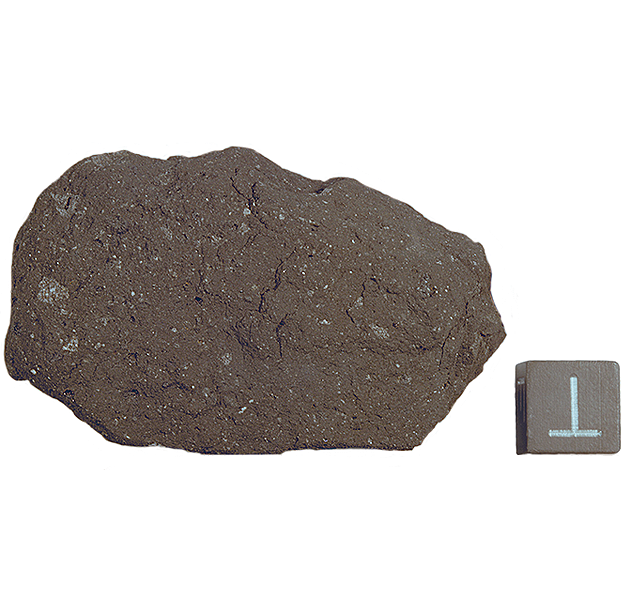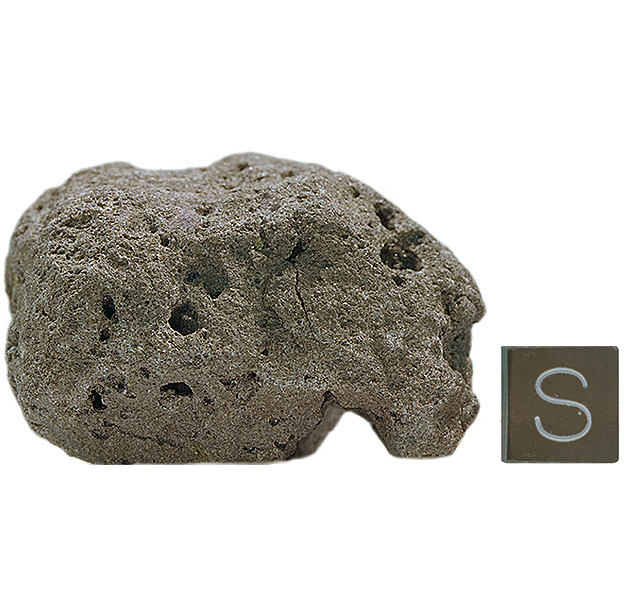
Fact sheet
Sample 10092 is a fine-grained vesicular basalt, that has not been dated. Plagioclase feldspar, pyroxene and ilmenite are the three main constituents. The pyroxene crystals are chemically zoned and display strain features that are visible between crossed polars. Additionally, olivine, silica (cristobalite?), ulvöspinel, chrome-spinel, phosphate and a K-rich glass are present, but in low abundance. In reflected light, the iron sulphide troilite can be seen as small pale yellow crystals, some hosting minute inclusions of metallic iron.
Further details of this and other Apollo samples are here: http://curator.jsc.nasa.gov/lunar/
The Apollo 11 samples create an iconic collection since they were the first rocks collected by humankind that were returned to Earth from another solar system body. The Apollo 11 team collected and returned 22 kg of rock and soil samples.
Apollo 11 launched from Cape Kennedy on 16 July 1969. An estimated 530 million people watched Armstrong's televised image and heard his voice describe the event as he took "...one small step for a man, one giant leap for mankind" on 20 July 1969.

